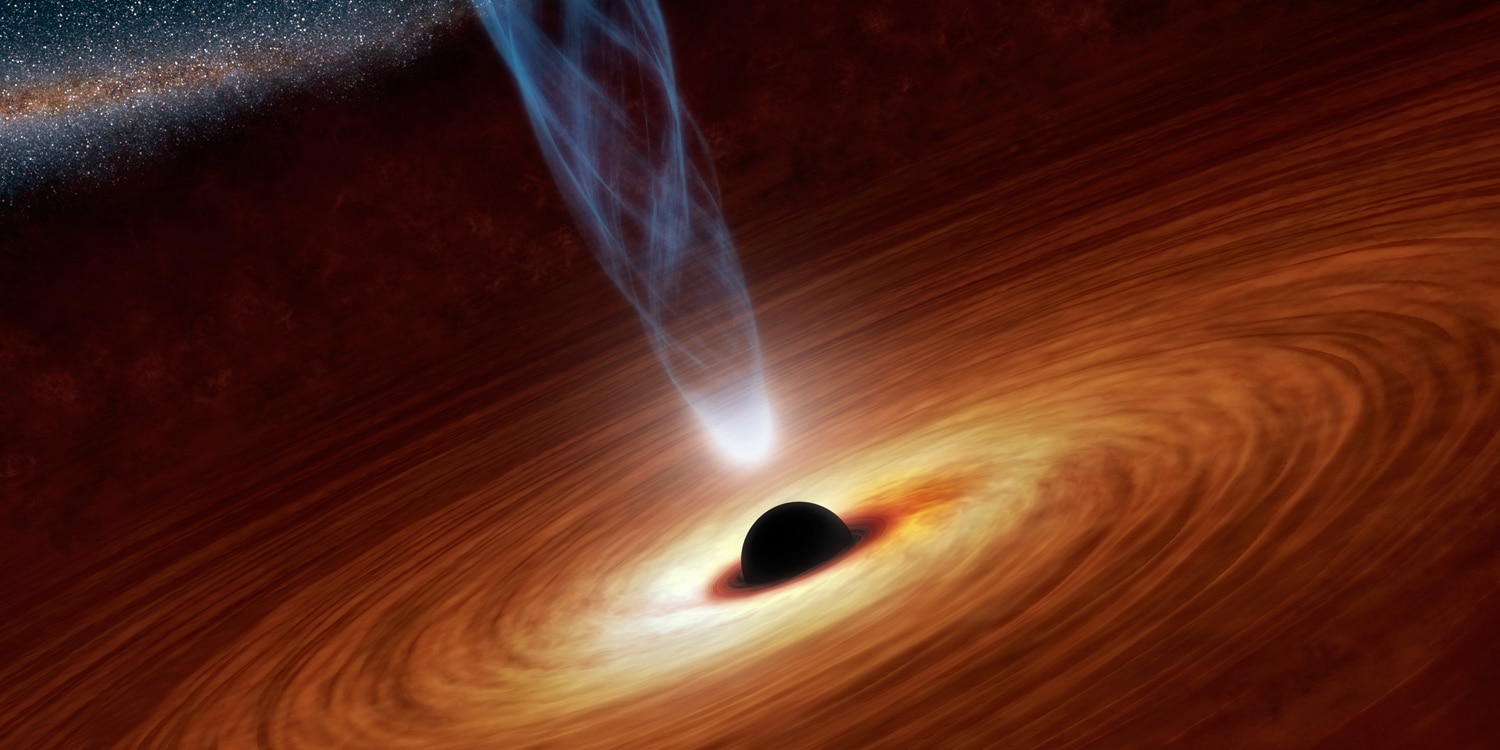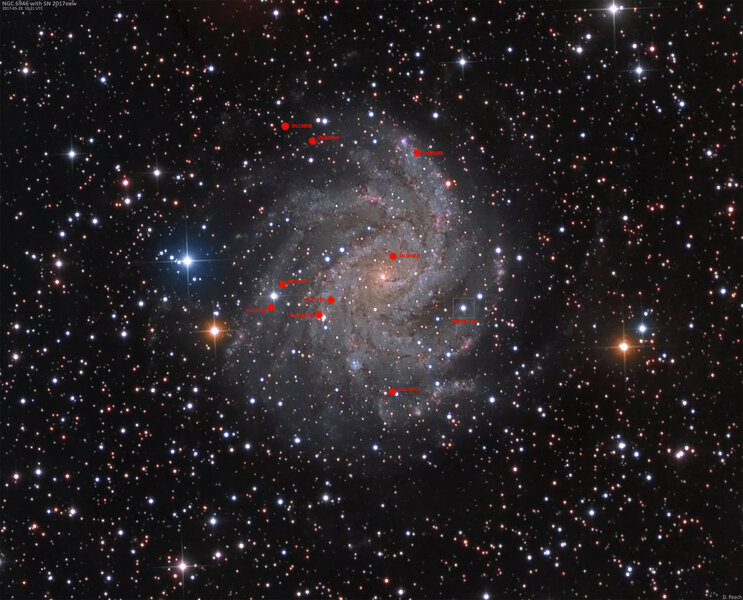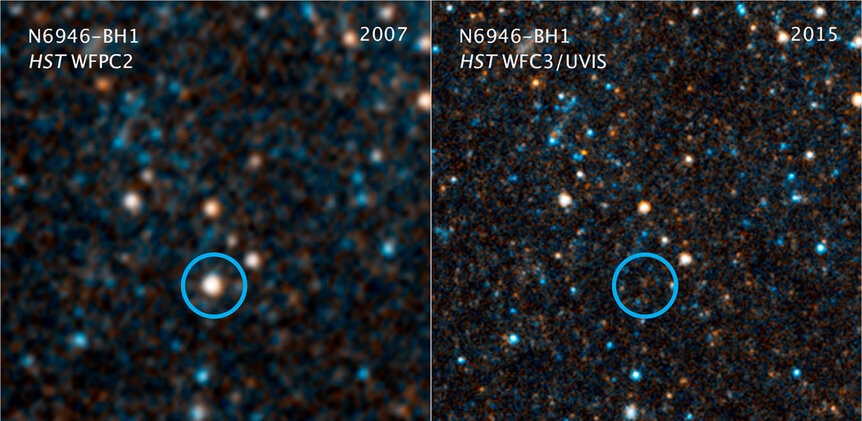Create a free profile to get unlimited access to exclusive videos, sweepstakes, and more!
Astronomers may have seen a star collapse directly to a black hole

One of the basic truisms in astronomy is that, when a massive star ends its life, it goes out with a bang. A big one. A supernova.
This titanic explosion is triggered when the star runs out of nuclear fuel in its core. The core collapses in a heartbeat, and the energy generated in that collapse is so immense that it blows the outer layers off. This explosion is so colossal it can outshine an entire galaxy! In the meantime, the collapsed core can form an exotic neutron star, or may even squeeze itself down into a black hole.
Now, I’ve skipped some steps there, but that’s the general picture (if you want more, check out my Crash Course Astronomy episode on high mass stars and supernovae). If you want a black hole, you have to blow up a massive star.
Except, maybe not. It turns out there’s a loophole that could allow a star to bypass the supernova part. It collapses directly down to a black hole without the explosion. Some energy is released, but not much compared to a supernova, and in the end what you get is a now-you-see-it-now-you-don’t situation: The star is there, and then suddenly ... it isn’t.
The idea of a “failed supernova” is an interesting theoretical astrophysical problem, and one scientists have been working on for a while now. But there’s been a new an exciting development: Astronomers now think they’ve seen one!
The star in question is called N6946-BH1, and it was found in a very cool survey specifically designed to look for failed supernovae. Using the Large Binocular Telescope in Arizona, 27 galaxies all within about 30 million light-years of Earth were observed over and over again. Each image was painstakingly compared to the others to look for “transients”: objects that have changed brightness. Even using rather stringent criteria, thousands were found — stars change brightness for a lot of reasons, but most are not due to them going supernova ... or, in this case, failing to supernova.
Eventually, the number of interesting objects was whittled down to just 15. Six of them turned out to be run-of-the-mill exploding stars (if the titanic explosion of a few octillion tons of star screaming outward at a substantial fraction of the speed of light can be called “ho-hum”), but nine of them turned out to be more interesting.
Of these, all but one were likely unusual events, like two stars merging, which can cause a very big (and very pretty) eruption, but again falls short of the outcome of a massive star dying. When all was said and done, after searching 27 galaxies for seven years, only one object was left: N6946-BH1.
In earlier images, the star is there, clearly seen in the galaxy NGC 6946, a lovely face-on spiral galaxy roughly 20 million light-years away (and one that has had no fewer than 10 recorded supernovae in the past century; by coincidence one was seen just this year). Then, in later images, it’s gone. Like, gone: Disappeared. Poof.
If it had exploded as a supernova it would’ve been seen in the images. Instead, in 2009, it briefly got somewhat brighter, glowing at about a million times brighter than the Sun; then it faded so much it was only about 2% of its previous brightness (that is, pre-collapse) by 2015. And yes, in human terms, a million times the Sun’s luminosity is terrifyingly bright, but in terms of a supernova, it’s barely worth mentioning; a typical one will shine many billions of times brighter than the Sun! So this was, at best, a bit of a pop.
So, how do we know it wasn’t some sort of weird supernova, maybe obscured by lots of dust in the host galaxy? This material is dark and opaque, and can completely block the light from even a normal supernova. Follow-up observations using Spitzer Space Telescope should reveal that, because infrared light can pierce through the dust. Spitzer did see some IR light from the event, roughly 2000–3000 times the Sun’s luminosity. Again, that’s a lot, but nowhere near what you’d expect from a supernova. Even a stellar merger would produce more than that.
It really looks like what’s left is what the astronomers had been looking for all along: a failed supernova.
If true, this is very interesting, indeed. Why? Because of physics.
It takes a massive star to explode; it has to have enough pressure in the core (caused by the mass of the star above it squeezing down on it) to fuse successively heavier elements over time. First, hydrogen fuses into helium. Then, when that runs out, helium is fused into carbon, and so on, until the core builds up iron. When iron fuses, it doesn’t release energy; it absorbs it. That’s a big problem, because it’s that release of fusion energy that holds the star up (in a similar fashion that hot air causes a balloon to expand). Once the star tries to fuse iron, the core collapses. If the core has a mass up to about 2.8 times that mass of the Sun, it forms a neutron star, but if it has more, it forms a black hole.
And in general, either way, the core collapse triggers the supernova in the outer layers, and kaboom.
But that’s where this gets funny. It may not always happen that way. For a range of core masses, theoretical calculations show that the explosion may stall. The outer layers get a decent kick, but not a huge one. They blow off, but it’s a more gentle event than the unfettered violence of a supernova.
That depends on a lot of factors, actually, but it tends to happen when the total star mass is roughly 25 times that of the Sun. Looking at the observations of N6946-BH1, that’s just about the mass it had.
And there’s more. We see lots of high-mass stars in galaxies being born, but there aren’t enough supernovae seen to account for them all. That implies failed supernovae happen relatively often.
Also, when we look at the masses of neutron stars and black holes, we find there’s a gap between them; the lowest-mass black holes are still considerably more massive than the highest-mass neutron stars. If all these compact objects formed from regular supernovae, you’d expect there to be a smooth transition. That’s because, in a supernova, a lot of the material in the star still lingers near the core, and that can fall back on the newly formed neutron star. If there’s enough, the neutron star will then collapse to form a low-mass black hole. So you’d expect to see lots of black holes right at the lower mass limit. But we don’t.
Ah, but in the failed supernova scenario, there’s a lot more material left over — there wasn’t enough energy in the event to blow away all the outer layers. This comes crashing back down and adds its mass to the neutron star’s, making a far more massive black hole. So, in reality, the existence of failed supernovae explains a lot of different phenomena.
And now, very likely, we’ve seen one! More observations would be nice, though. For example, a newly formed black hole should emit lots of X-rays, as material heats up before falling in. If we see those X-rays, that would go a long way in understanding what we’re seeing.
And again, this is the first one that we’ve seen. Given the number of supernovae that were detected in the survey, it implies that something like 14% of all high-mass star deaths result in failed supernovae. If that’s the case, then we need more eyes on the sky looking for these events. Supernovae are what create and distribute elements literally vital to our existence: iron, calcium and more. Without them, you and I would literally not exist.
In my opinion, that makes these events very much worthy of our study. Even when they fail.
Image Credit: NASA/JPL-Caltech




























